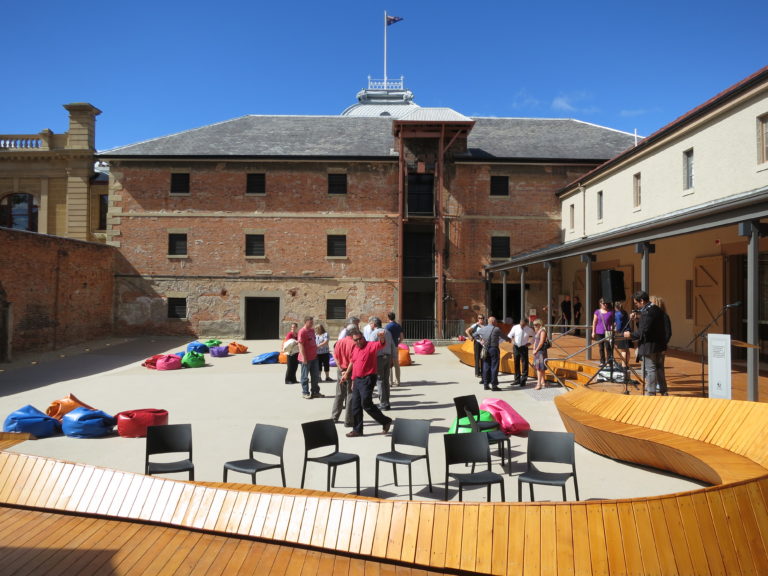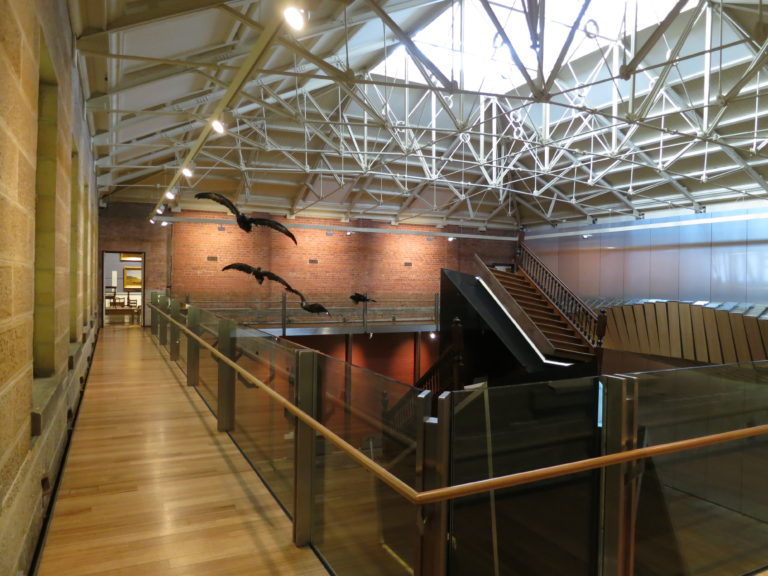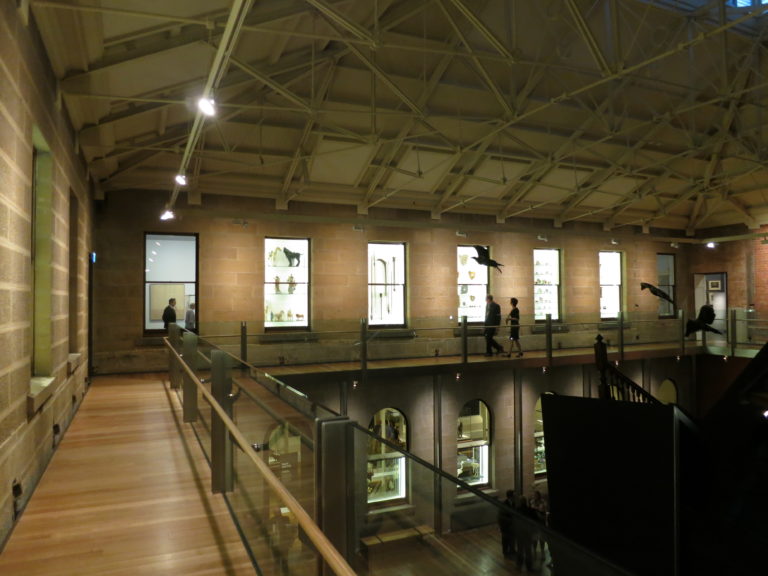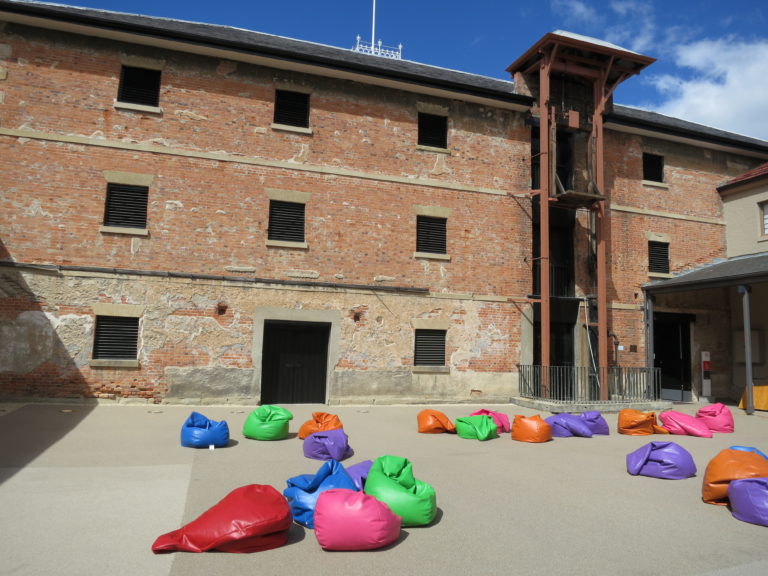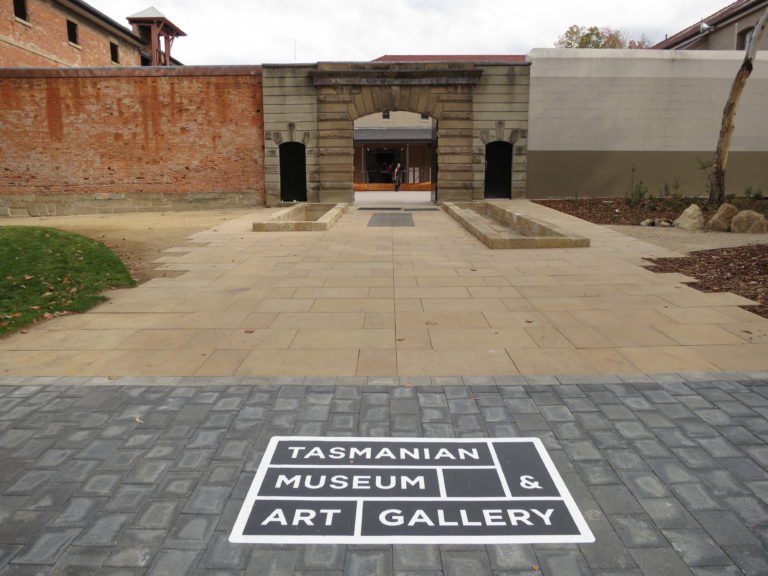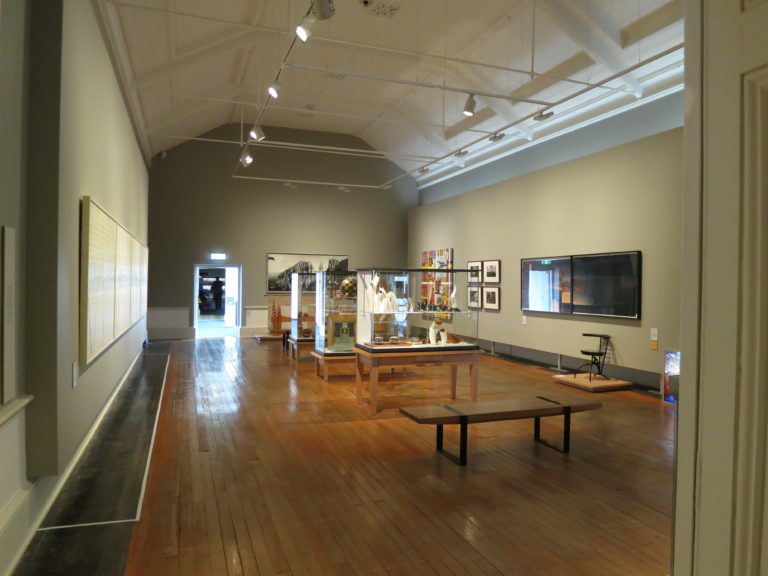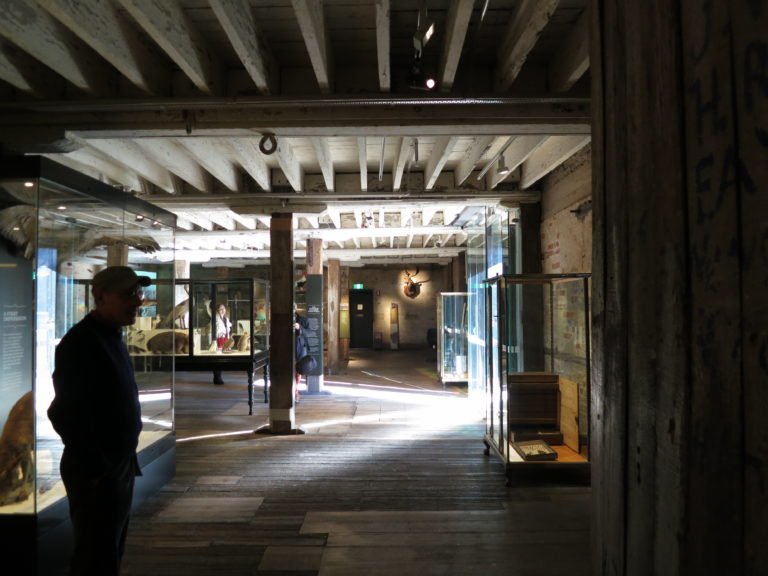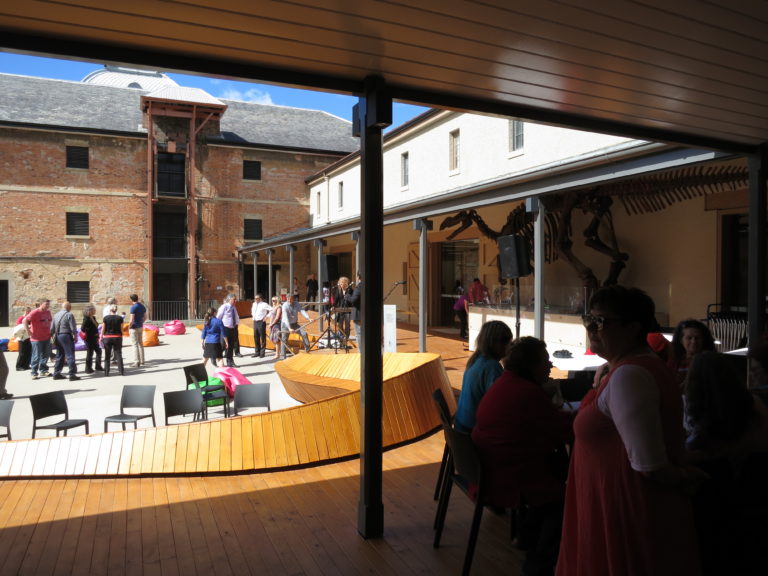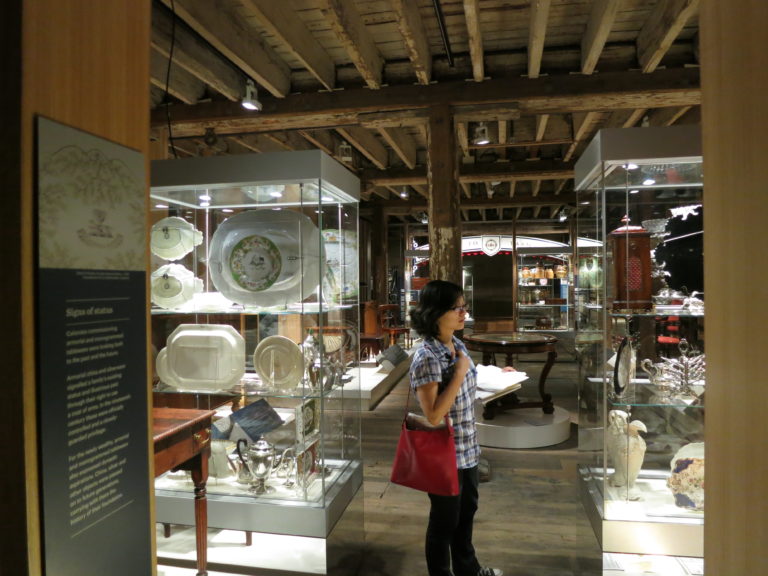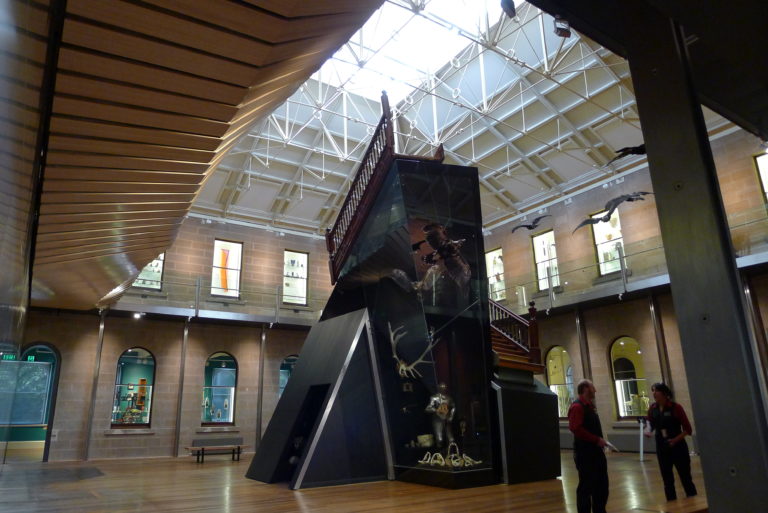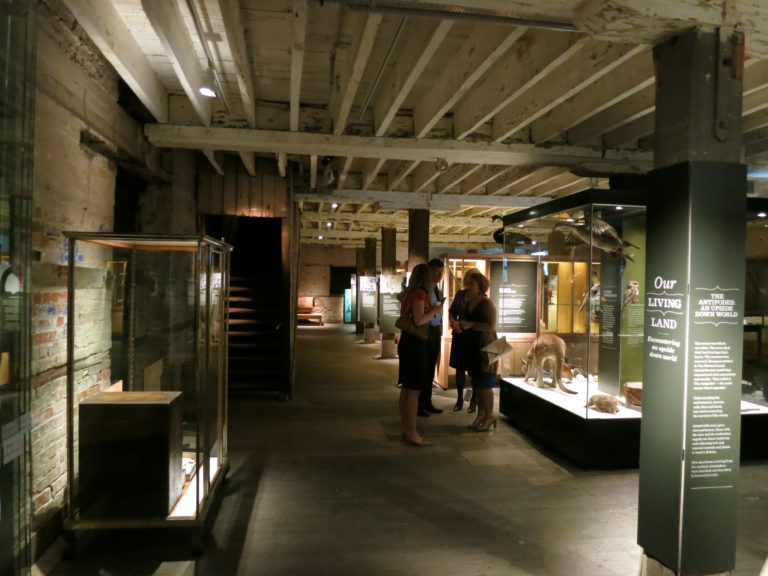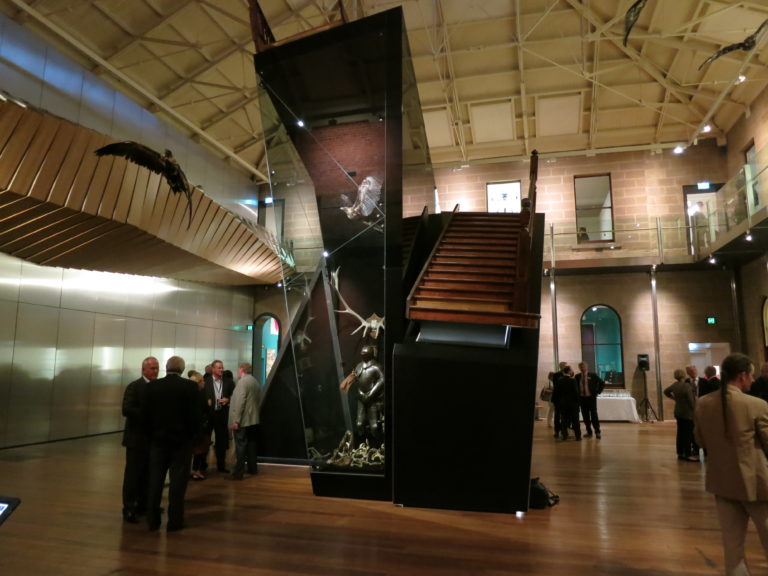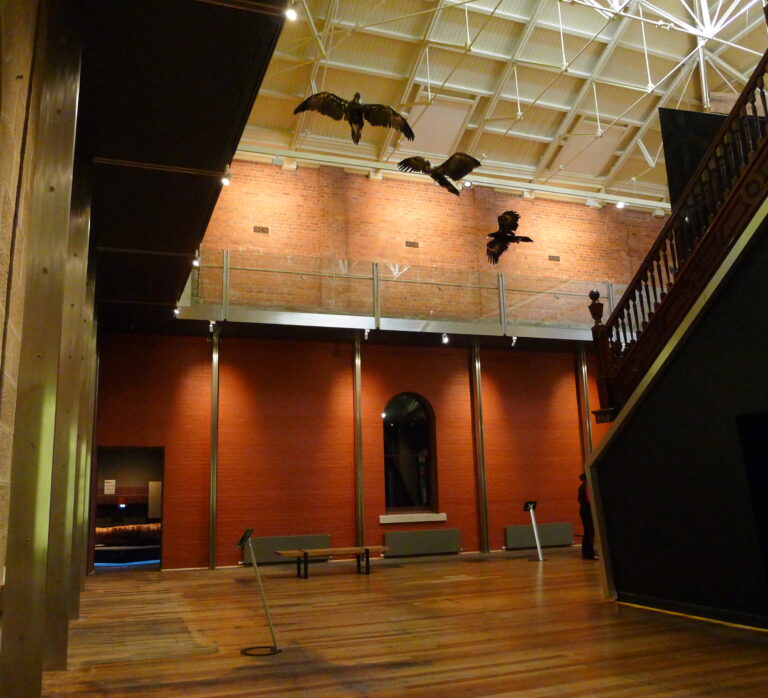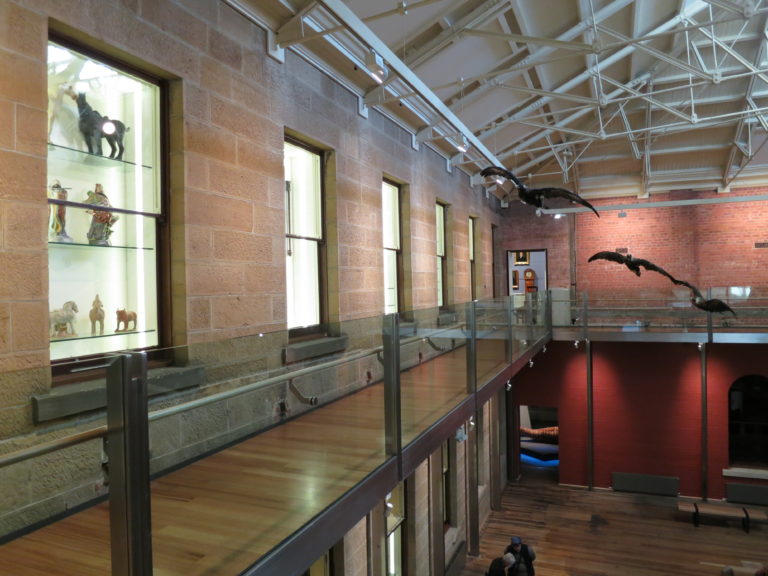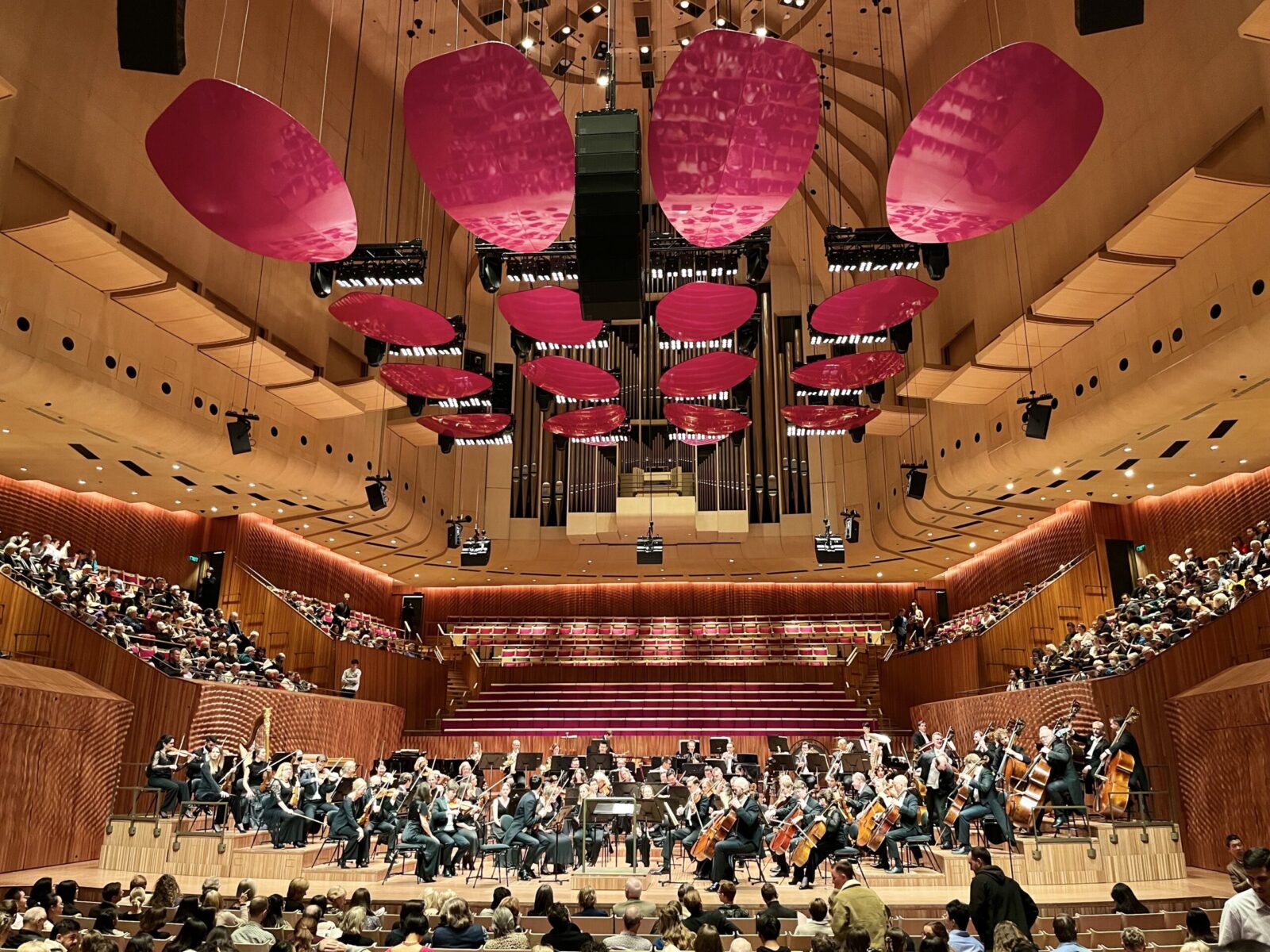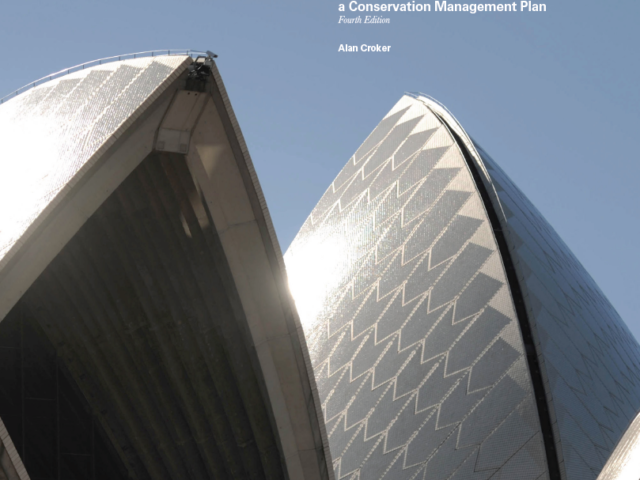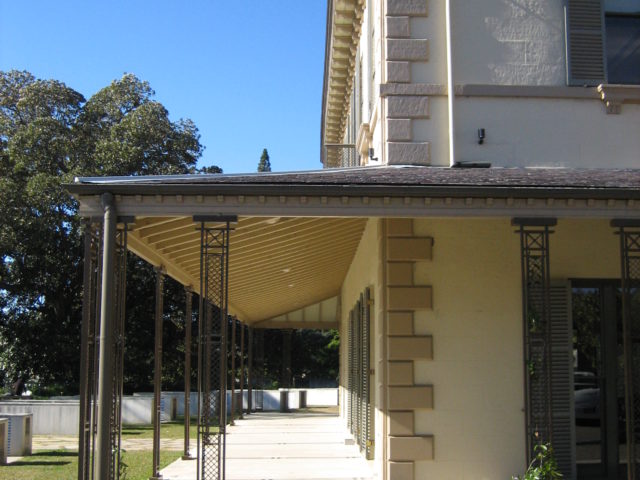CONSERVATION AND ADAPTIVE RE-USE
2009 – 2013 (Stage 1)
The Tasmanian Museum and Art Gallery (TMAG) is of national significance as one of the oldest museums and art galleries in Australia and as the primary repository of Tasmanian natural history and cultural material collections.
Design 5 was first engaged by TMAG in 2007 to prepare a Masterplan Heritage Strategy for a Redevelopment Project. From 2009, working in collaboration with architects Francis-Jones Morehen Thorp, Design 5 was involved in Stage 1 of TMAG’s refurbishment and redevelopment including creation of a new entry precinct. Design 5’s work involved sensitive repair and adaptation of Tasmania’s earliest surviving buildings and the earliest museum building on the site for improved public access, museum display and interpretation.
Major components of the project were the introduction and integration of public access and complex modern services within the 1820s Bond Store – the most sensitive building on the site. Testing of options and prototypes were an important part of finding solutions with least impact and optimal operational efficiency.
All decisions were guided by a comprehensive understanding of the significance and integrity of this unique complex of buildings. Design 5 developed the heritage framework for the whole site and were actively involved in ensuring the principles and approach were implemented across all stages of the project. An essential part of this was Design 5’s involvement throughout all stages of the concept design, documentation, approvals process and construction to completion.
Stage 1 of the redevelopment project was completed in March 2013 (project cost $30M, construction cost $12.5M).
AWARDS
2014 AIA (TAS) Heritage Award for Architecture
2013 City of Hobart Heritage Award (non-residential category) for Stage 1 Redevelopment Project
2013 Museums & Galleries National Award (MAGNA) National Winner for Redevelopment Project

